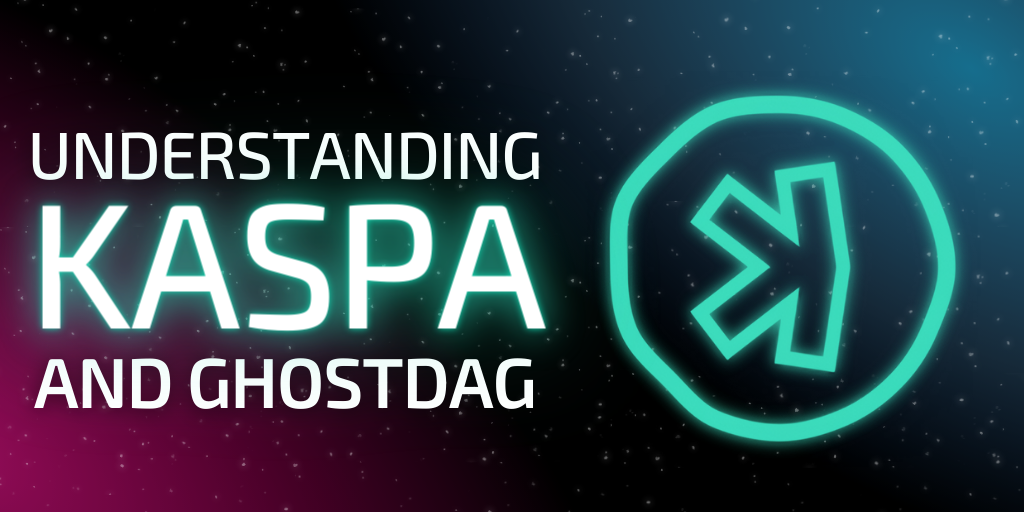Cryptocurrencies have revolutionized the way we think about money and transactions. With their decentralized nature and cutting-edge technology, they have the potential to disrupt traditional financial systems. One such cryptocurrency that has been gaining attention in the crypto community is Kaspa (KAS). What sets Kaspa apart from other crypto projects is its unique ability to facilitate high block rates while preserving the level of security provided by Proof-of-Work (PoW) consensus mechanisms.

Kaspa 101
At its core, Kaspa is an instantaneous validation transaction sequencing layer. It allows miners to promptly include transaction requests into the blockchain, supporting non-contemporary state updates. This is made possible through its innovative use of the PHANTOM protocol, which is a scalable simplification of the Bitcoin consensus. By leveraging Bitcoin’s PoW, UTXO-based isolated state, deflationary financial policy, and having no pre-mining and central governance, Kaspa aims to provide a secure and efficient platform for transactions.

Kaspa features
One of the key features that sets Kaspa apart is its instant block times. With one block per second currently, and plans to increase capacity to 10 or even 100 blocks per second, Kaspa allows for pre-trade privacy and anonymous transactions. This protects users from exploitations such as manipulation of transaction ordering, making it an attractive option for those seeking fast and secure transactions.
Another notable feature of Kaspa is its high block rates. Kaspa’s protocol is designed to handle high transaction volumes, making it a scalable solution for the growing demands of the crypto market. Unlike some other cryptocurrencies that struggle with scalability issues, Kaspa’s innovative approach enables it to handle increased transaction volumes without compromising on security.
Furthermore, Kaspa’s use of PoW consensus mechanisms ensures that the network remains secure and resistant to attacks. PoW has been proven to be a robust and reliable method for securing blockchain networks, and Kaspa maintains this level of security while also providing fast and efficient transactions.
In addition, Kaspa’s UTXO-based isolated state allows for a secure and transparent transaction history. This means that each transaction is recorded on the blockchain, creating a tamper-proof ledger that can be audited and verified by anyone. This makes Kaspa a suitable option for businesses and individuals who require transparency and security in their transactions.
Moreover, Kaspa’s deflationary financial policy means that the supply of KAS tokens is limited, which can potentially lead to an increase in value over time. This may make KAS an attractive investment option for those looking to diversify their portfolio with a cryptocurrency that has a unique approach to monetary policy.

Understanding GhostDAG – A Primary Technology Behind Kaspa
Blockchain technology has evolved significantly since the advent of Bitcoin in 2009. While Bitcoin introduced the concept of a decentralized, permissionless, and transparent ledger, subsequent blockchain projects have sought to address its limitations and explore new possibilities. One such advancement is the GhostDAG consensus protocol, which powers the Kaspa blockchain, and aims to provide a robust and efficient solution for permissionless blockchains.
GhostDAG stands for “Greedy Heaviest-Observed Sub-Tree Directed Acyclic Graph,” and it is a consensus protocol that builds on the concept of blockDAG (Directed Acyclic Graph). In a blockDAG, blocks are connected to each other in a directed acyclic graph, rather than a linear chain as in Bitcoin. This allows for multiple blocks to be added concurrently and eliminates the need for a single global consensus point.
The key innovation of GhostDAG is its approach to solving the problem of differentiating honest blocks from dishonest ones in a blockDAG. In traditional blockDAGs, there can be multiple valid blocks at the same height, leading to potential conflicts and challenges in achieving consensus. GhostDAG addresses this challenge by introducing a “heaviest-observed sub-tree” concept, which helps to identify a reliable set of commands on the blockDAG that is mutually consented by all honest miners.
The heaviest-observed sub-tree refers to the sub-graph of the blockDAG that contains the heaviest chain of blocks observed by the majority of the network participants. In other words, it is the longest chain of blocks that has been consistently observed and agreed upon by the majority of the miners. This chain is considered the “honest” chain, and the blocks in this chain are considered valid.
To further improve the efficiency and security of the consensus protocol, GhostDAG introduces a “kHeavyHash” mining puzzle. This puzzle requires miners to solve a computationally intensive problem to validate blocks and add them to the heaviest-observed sub-tree. The “k” in kHeavyHash represents the number of heaviest blocks that a miner must reference in order to solve the puzzle. This introduces a level of difficulty that prevents malicious miners from easily manipulating the consensus and adds an additional layer of security to the network.
GhostDAG also incorporates the concept of “GHOST rule,” which stands for “Greedy Heaviest-Observed Sub-Tree.” The GHOST rule specifies that the heaviest-observed sub-tree is determined based not only on the length of the chain but also on the total “weight” of the blocks. In other words, blocks that have more computational work invested in them, such as solving the kHeavyHash puzzle, carry more weight and are given more importance in determining the heaviest-observed sub-tree. This ensures that honest miners who invest more computational resources are incentivized and rewarded, while discouraging malicious miners from attempting to manipulate the consensus.
Kaspa leverages the GhostDAG consensus to enable fast and secure block validation, allowing for high throughput and low transaction fees. The protocol also provides robustness against various attacks, including double-spending attacks and block withholding attacks, making it a reliable solution for permissionless blockchains.

How to Swap Kaspa
In conclusion, Kaspa is a promising cryptocurrency that offers instantaneous transactions with uncompromised security. Its innovative use of the PHANTOM protocol, PoW consensus mechanisms, UTXO-based isolated state, deflationary financial policy, and high block rates make it a standout option in the crypto space. As the demand for fast and secure transactions continues to grow, Kaspa’s unique features may position it as a formidable player in the cryptocurrency market.
With Swapzone, you have access to a variety of $KAS offers and can exchange it at the best rates and conditions without commission, registration, or limits. Here’s a simple guide to buying Kaspa on Swapzone:
- Choose the KAS swap pair you want (e.g. BTC to KAS).
- Enter the total amount of BTC you wish to exchange.
- Select the best BTC to KAS swap offer available.
- Click on the Exchange button.
- Enter the wallet address where you want to receive your KAS tokens.
- Send your BTC deposit to the provided address.
- Wait for your BTC-KAS swap to be processed.
- Receive your KAS tokens in your wallet!


